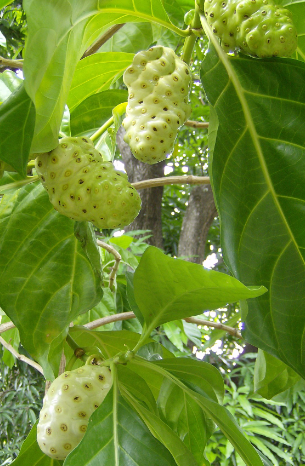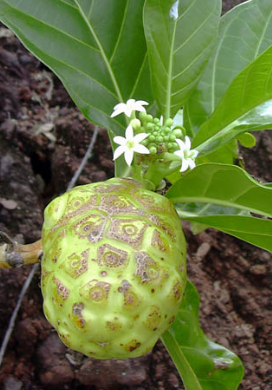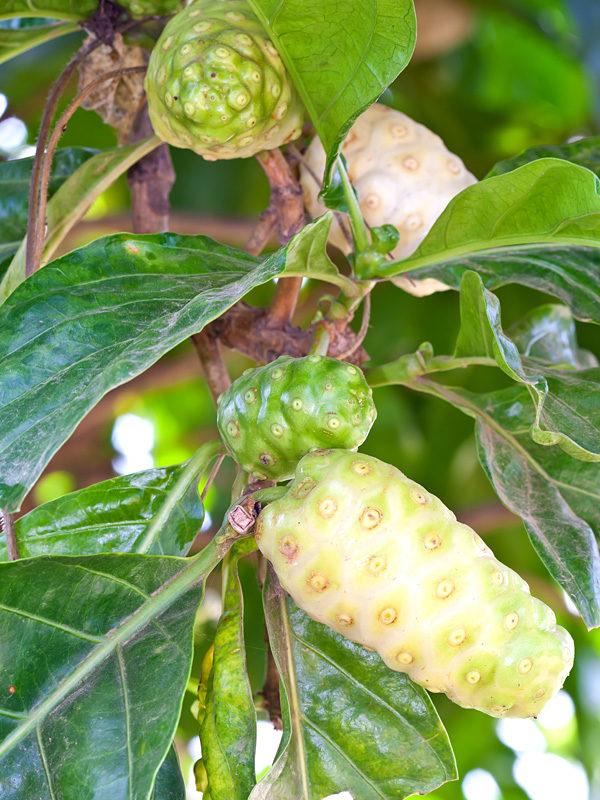Indian Mulberry (Noni) Plant
Morinda citrifolia, or Indian Mulberry (Noni), is a hardy shrub growing 3-6m, thrives in well-drained loam, full sun, with high moisture, and has edible and medicinal uses.

Habit
Shrub
Height
3 to 6 m
Growth
Medium
Soil
Well-drained, loamy soil
Shade
Full
Moisture
High
Edible
Yes
Medicinal
Yes
Origin
India, Southeast Asia
Climatic Condition
Tropical, Humid
Temperature (°)
20 to 35
Humidity (%)
70 to 90
Potting media
Coir-perlite mix
Fertilizers
Organic manure, NPK 4:2:3
Watering
High
Plant Weight
500-1000 g
Flowering Time
Summer to Fall
Soil Ph level
5.5 to 6.5
Water Ph level
6.0 to 7.0
Soil EC
0.3 to 1.0
Yield Per Plant
30-50 kg/tree
NPK ratio
14:14:14
life Span
10-20 years
Health Benefits
Rich in Vitamin C, boosts immunity, anti-inflammatory
Suggested Grow Media or Potting Mix ?
50% loam, 25% peat, 25% compost
Suggested Fertigation/Fertilizers
Fertilize with organic compost and seaweed extract monthly.
Common Diseases and Remedies
Root Knot Nematodes, Leaf Spot, Aphids, Fruit Fly, Mealybugs.
Rotate crops, use resistant varieties, Prune affected leaves, apply neem oil, Insecticidal soap, Wipe with alcohol.
HEALTH BENEFITS
· Supports immune function and reduces inflammation.
· Contains antioxidants that help fight oxidative stress.
· May aid in digestion and improve gut health.
· Used to manage high blood pressure and improve heart health.
· Has pain-relieving and wound-healing properties.

